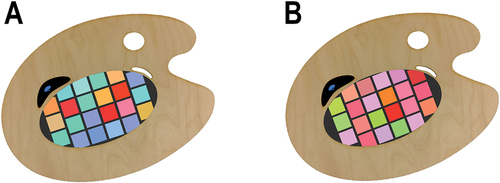Figures & data
Figure 1. Overview of the ANIMA system including: (left) a tablet-based mandala coloring canvas for the training of focused attention, (middle) a tablet-based adaptive color palette for peripheral monitoring of the mindfulness practice, and a brain activity headband for sensing the mindfulness states in real-time (right).
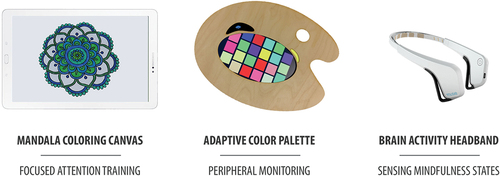
Figure 2. Classification of mindfulness practices based on their range of movement, as well as their level of structure, illustrated with references to relevant HCI work.
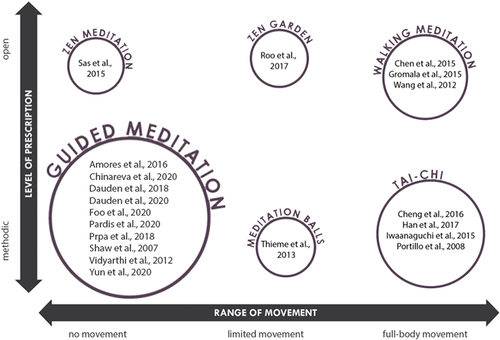
Figure 3. One participant’s illustration of mandala coloring process: starting from the center with the desired color, here felt tip (left), coloring in each concentric layer (middle), and partially completed mandala at the end of the session (right).

Figure 5. Mandalas colored by our participants from the online interviews P5 (A) and P4 (B), and the choice of four mandalas to color in the face-to-face interviews (C-F).
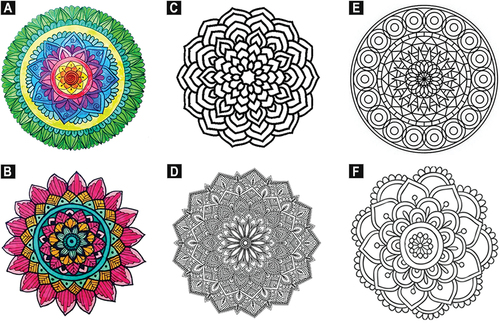
Figure 6. This diagram shows an overview of the system by describing the three components of Anima (i.e. brain activity headband, adaptive color palette and mandala coloring canvas on two Android tablets respectively) and the way they function together.
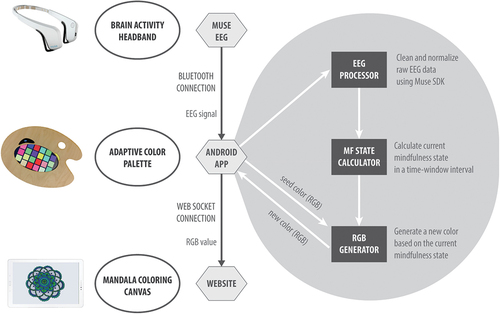
Figure 7. Close up diagram of Anima’s color palette identifying its main parts: (A) four seed colors originally selected by the user, (B) generated colors based on the mindfulness states, (C) current selected color to use on mandala coloring canvas, and (D) connection status with brain activity headband.
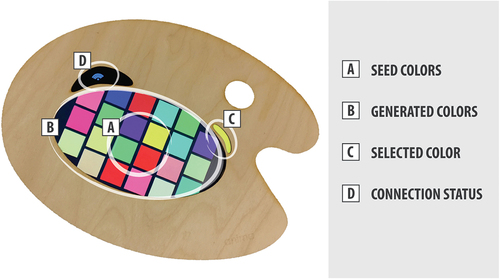
Figure 8. This image shows the design exploration of the mapping of mindfulness states into colors, by drawing from different materials: watercolor (left), oil paint (middle), pencils (right).
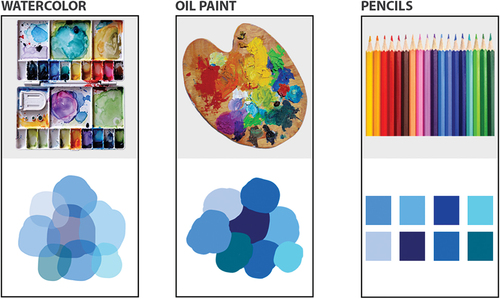
Figure 9. Photographs of the setting of two distinct moments during the workshop sessions. On the left, participant coloring a mandala with Anima (individual session). On the right, follow up group discussion.




